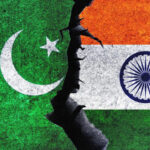We have a fairly manageable basket of issues: UIBC chief
More than two months after Prime Minister Narendra Modi and U.S. President Donald Trump announced in Osaka that U.S. Trade Representative Robert Lighthizer and Commerce Minister Piyush Goyal should meet and resolve the trade impasse, there has been no meeting thus far, but U.S.-India Business Council (UIBC) president Nisha Biswal says she is hopeful they will meet before Mr. Modi travels to the U.S. this month. Excerpts:
Why have the trade representatives not been able to meet despite the leaders’ decisions during two separate meetings in the last three months?
I think it is a really busy time for the United States on the trade front. We are also in the midst of an intense set of back-and-forths with China; you have the U.S.-Mexico-Canada Agreement before the Congress.
What has prevented the trade representatives (TRs) from getting together is a matter of aligning schedules.
My understanding is both leaders have expressed a strong commitment to have the TRs to meet before PM Modi’s visit to the U.S. (September 21-28); I am hopeful that will still happen.
Once they meet, what are the concessions both sides must give in order to break the ice?
I think the ‘landing zones’ will be the things that American industry has identified, including concerns on tariffs on ICT, price controls on medical devices, things that the USTR has identified like market access to agricultural products, as well as issues the Indian side has highlighted, including the Section 232 tariffs (tariffs on steel and aluminum), the withdrawal of India’s GSP status, etc. I don’t think that it is that difficult to find an agreement that meets the core concerns and moves us beyond these issues. Compared to trade negotiations the world over, we have a fairly manageable basket of issues. What is important is to establish that we can negotiate them. If we can’t resolve these small issues, how will we ever tackle larger ones for a comprehensive trade agreement?
How much is the danger of the USTR launching a ‘301 investigation’ against India?
One should always be watchful of that, but when you have two leaders with an express commitment to improve the economic partnership, there is a way forward; and I am fairly confident if the two trade teams get together, they will come up with a solution.
Have other issues like regulations on e-commerce been resolved?
I wouldn’t say that U.S. businesses are comfortable with them, but they are somewhat reassured that there is now a more inclusive and consultative process to address these specific issues.
The biggest issue is that for India to attract the kind of investment it needs, it has to project policy stability and policy coherence. Everyone recognises that as India grows, its policy framework needs to evolve, but it should be done in a way that is stable and coherent. There must be a consultative process, certain predictability and when positions are adopted, there must not be contradictory interpretations of them in different government departments. On e-commerce and data protection, India has indicated it will take its time, and our industries are saying that they feel the process is more consultative now.
How should India position itself to benefit from the U.S.-China trade fallout?
Moving supply chains is a very capital-intensive proposition, and India has yet to create incentives and efficiencies that would allow firms to make that switch. If companies don’t see a predictability and reliability in the tax structure, how will they incur such large liabilities and how will they plan to recoup their investment?
Many countries are providing tax deferments for time, land incentives, ensuring infrastructure and a skilled labour pool.
It isn’t just India, but the U.S. too has shown lack of policy stability and coherence; whether it is on sudden tariffs, sanctions on oil, changes in immigration laws…
At the USIBC, we have been consistently voicing our opposition to tariffs.
Everyone loses in a trade war. The frustration that has to be dealt with though is that if the U.S. is adhering to a low tariff and high standards regime, then there must be a similar movement by our trading partners, else resentment builds up in the U.S. that it is not a level-playing field for our companies globally. And, that’s why there is decreasing support for free trade agreements (FTAs) domestically.
Is a U.S.-India FTA likely?
I think to say it is likely overstating the case, but it is imperative for both countries to move in that direction for U.S.-India trade to get to where we want it.
‘India, U.S. trade problems solvable’
We have a fairly manageable basket of issues: UIBC chief
More than two months after Prime Minister Narendra Modi and U.S. President Donald Trump announced in Osaka that U.S. Trade Representative Robert Lighthizer and Commerce Minister Piyush Goyal should meet and resolve the trade impasse, there has been no meeting thus far, but U.S.-India Business Council (UIBC) president Nisha Biswal says she is hopeful they will meet before Mr. Modi travels to the U.S. this month. Excerpts:
Why have the trade representatives not been able to meet despite the leaders’ decisions during two separate meetings in the last three months?
I think it is a really busy time for the United States on the trade front. We are also in the midst of an intense set of back-and-forths with China; you have the U.S.-Mexico-Canada Agreement before the Congress.
What has prevented the trade representatives (TRs) from getting together is a matter of aligning schedules.
My understanding is both leaders have expressed a strong commitment to have the TRs to meet before PM Modi’s visit to the U.S. (September 21-28); I am hopeful that will still happen.
Once they meet, what are the concessions both sides must give in order to break the ice?
I think the ‘landing zones’ will be the things that American industry has identified, including concerns on tariffs on ICT, price controls on medical devices, things that the USTR has identified like market access to agricultural products, as well as issues the Indian side has highlighted, including the Section 232 tariffs (tariffs on steel and aluminum), the withdrawal of India’s GSP status, etc. I don’t think that it is that difficult to find an agreement that meets the core concerns and moves us beyond these issues. Compared to trade negotiations the world over, we have a fairly manageable basket of issues. What is important is to establish that we can negotiate them. If we can’t resolve these small issues, how will we ever tackle larger ones for a comprehensive trade agreement?
How much is the danger of the USTR launching a ‘301 investigation’ against India?
One should always be watchful of that, but when you have two leaders with an express commitment to improve the economic partnership, there is a way forward; and I am fairly confident if the two trade teams get together, they will come up with a solution.
Have other issues like regulations on e-commerce been resolved?
I wouldn’t say that U.S. businesses are comfortable with them, but they are somewhat reassured that there is now a more inclusive and consultative process to address these specific issues.
The biggest issue is that for India to attract the kind of investment it needs, it has to project policy stability and policy coherence. Everyone recognises that as India grows, its policy framework needs to evolve, but it should be done in a way that is stable and coherent. There must be a consultative process, certain predictability and when positions are adopted, there must not be contradictory interpretations of them in different government departments. On e-commerce and data protection, India has indicated it will take its time, and our industries are saying that they feel the process is more consultative now.
How should India position itself to benefit from the U.S.-China trade fallout?
Moving supply chains is a very capital-intensive proposition, and India has yet to create incentives and efficiencies that would allow firms to make that switch. If companies don’t see a predictability and reliability in the tax structure, how will they incur such large liabilities and how will they plan to recoup their investment?
Many countries are providing tax deferments for time, land incentives, ensuring infrastructure and a skilled labour pool.
It isn’t just India, but the U.S. too has shown lack of policy stability and coherence; whether it is on sudden tariffs, sanctions on oil, changes in immigration laws…
At the USIBC, we have been consistently voicing our opposition to tariffs.
Everyone loses in a trade war. The frustration that has to be dealt with though is that if the U.S. is adhering to a low tariff and high standards regime, then there must be a similar movement by our trading partners, else resentment builds up in the U.S. that it is not a level-playing field for our companies globally. And, that’s why there is decreasing support for free trade agreements (FTAs) domestically.
Is a U.S.-India FTA likely?
I think to say it is likely overstating the case, but it is imperative for both countries to move in that direction for U.S.-India trade to get to where we want it.






NO COMMENT